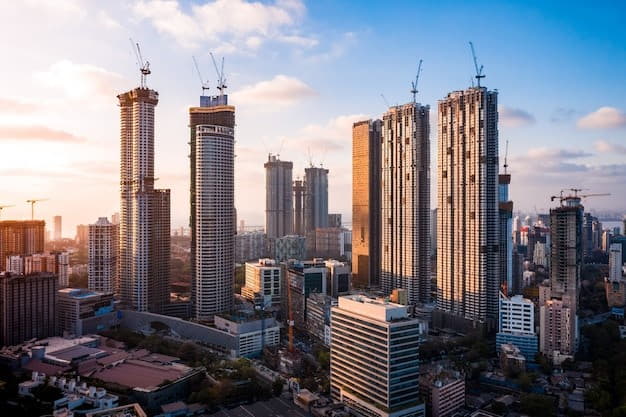Category Archives: Property Management
From Listings to Maintenance: How Rental Property Management Apps Simplify Tasks

In the realm of property ownership, the responsibilities can be numerous and demanding. From finding tenants to handling maintenance requests, the to-do list for property owners can seem endless. However, with the advent of rental property management apps, these tasks have become more streamlined and manageable than ever before.
Streamlining Tenant Management
One of the primary challenges for property owners is managing tenants efficiently. Rental property management apps provide a centralized platform for communication, allowing landlords to easily communicate with tenants regarding rent payments, lease agreements, and maintenance requests. With features like automated rent reminders and online payment options, these apps simplify the process of rent collection, reducing the likelihood of late payments and minimizing administrative overhead.
Moreover, many apps offer tenant screening services, enabling landlords to thoroughly vet prospective tenants before signing a lease agreement. By leveraging background checks and credit reports, property owners can mitigate the risk of renting to unreliable tenants, ultimately safeguarding their investment.
Simplified Property Maintenance
Maintenance is an inevitable aspect of property ownership, but coordinating repairs and addressing maintenance issues can be time-consuming and cumbersome. Rental property management apps streamline this process by allowing tenants to submit maintenance requests directly through the platform. Landlords can then prioritize and assign tasks to maintenance personnel, ensuring timely resolution of issues.
Furthermore, some apps offer features such as maintenance tracking and scheduling, allowing property owners to keep detailed records of past repairs and upcoming maintenance tasks. This proactive approach to property maintenance not only enhances tenant satisfaction but also helps prolong the lifespan of the property, ultimately preserving its value.
Efficient Financial Management
Effective financial management is essential for the success of any rental property venture. Rental property management apps offer robust financial tracking and reporting tools, allowing landlords to monitor income and expenses with ease. From generating detailed financial statements to tracking tax-deductible expenses, these apps simplify the process of managing rental property finances.
Additionally, many apps integrate with accounting software platforms, enabling seamless synchronization of financial data and simplifying tax preparation tasks. By providing a comprehensive overview of the property’s financial health, these apps empower landlords to make informed decisions and optimize their investment strategies.
Enhanced Communication and Collaboration
Communication is key to successful property management, and rental property management apps facilitate seamless communication and collaboration among stakeholders. Whether it’s communicating with tenants, coordinating with maintenance personnel, or collaborating with fellow property owners, these apps provide a centralized platform for effective communication.
Moreover, some apps offer features such as document sharing and task assignment, allowing property owners to delegate responsibilities and streamline workflow processes. By fostering transparent and efficient communication, these apps help mitigate misunderstandings and conflicts, ultimately enhancing the overall management experience.
Conclusion
Rental property management apps have revolutionized the way property owners manage their assets, offering a plethora of features designed to streamline tasks and enhance efficiency. From tenant management to property maintenance, these apps provide comprehensive solutions to the myriad challenges faced by property owners. By leveraging the power of technology, landlords can simplify their workload, optimize their operations, and maximize the profitability of their rental properties. With the ever-evolving landscape of property management, rental property management apps are poised to play an increasingly integral role in the industry, empowering property owners to navigate the complexities of property management with confidence and ease.
In conclusion, apps to manage rental property have become indispensable tools for modern property owners, offering unparalleled convenience, efficiency, and peace of mind. As technology continues to advance, the capabilities of these apps will only continue to expand, further revolutionizing the way rental properties are managed and maintained.
Beyond Four Walls: How Resident Apps Foster Connection and Improve Quality of Life

For many years, apartment communities were just that – a collection of apartments and shared amenities bounded by four walls. However the emergence of resident apps is transforming these spaces into connected, engaging communities. As property owners embrace technology, they’re discovering innovative ways to meet resident needs, facilitate meaningful relationships, and boost satisfaction.
The Rise of Resident Apps
A resident app allows apartment dwellers to access community services, connect with staff and neighbors, and stay informed – all from the convenience of their smartphone. Adoption of these apps has skyrocketed in recent years. In fact, 70% of renters now say access to a community app plays a role in their housing selection.
For property managers, resident apps provide a solution to declining in-person engagement. Easy access empowers residents to get questions answered, pay rent, submit maintenance requests, and more at any time. Modern renters want flexibility and instant service at their fingertips. Apps deliver just that.
Strengthening Community Ties
Far from dismantling human connections, apps are bringing community members closer together. Features like neighborhood directories and event calendars make it simple for residents to plan activities, exchange contact details, and build real relationships. During the pandemic’s peak, apps became a lifeline for isolated renters seeking social interaction.
A recent study from UCLA found that apartment dwellers with closer social ties enjoy a greater feeling of overall well-being and satisfaction. Apps provide plenty of opportunities for residents to safely engage with like-minded neighbors. From planning group workouts to coordinating book clubs, the possibilities are endless.
Enhancing Communication and Transparency
With an app, property teams can broadcast updates instantly to the entire resident body. Maintenance alerts, safety notices, community event invitations, and more can all be delivered directly to renters’ devices.
Apps also add accountability for managers. Residents receive real-time updates as work orders are processed, questions are answered, and complaints are resolved. This level of transparency builds trust and confidence in management.
According to research, 95% of renters say reliable, responsive communication increases their likelihood to recommend an apartment community. Apps provide the infrastructure to exceed these expectations.
The Impact on Satisfaction
All of this connectivity pays off enormously in higher resident satisfaction. In fact, Buildium reports that regular app users rate their living experience 22% better than non-users.
That enthusiasm translates into improved resident retention for property owners. Plus, higher online ratings and better word-of-mouth for the community. The advantages don’t end there.
Optimized operations is another satisfaction booster. Apps allow staff to streamline maintenance efforts, centralize data, and resolve issues proactively. This efficiency gets work finished faster, prevents problems, and keeps residents happier.
The proof is in the numbers. A Commercial Cafe study revealed that apartment communities see occupancy rates rise as much as 8% after adopting a resident app. Satisfaction and retention rise right along with those figures.
Creating Connected, Future-Forward Communities
Resident apps provide the digital infrastructure for apartment communities to engage and support their residents. As adoption grows, managers are discovering this technology’s immense potential to strengthen bonds, enhance transparency, and drive satisfaction.
Renters today expect seamless connectivity wherever they live. An app delivers that. But more profoundly, it helps create a sense of belonging that turns apartments into genuine communities.
The data shows resident apps work. They meaningfully improve communication, deepen social ties, and optimize operations. Most importantly, they give renters a voice and meet their demand for flexible, responsive service.
As the world grows increasingly high-tech, apps help future-proof apartment communities while keeping human connection at their core. That’s a win-win for both property owners and their valued residents.
In conclusion, the advent of resident apps has ushered in a new era for apartment communities, transforming them from mere living spaces to connected and engaging hubs. Property owners embracing technology are finding innovative ways to meet resident needs, foster relationships, and enhance satisfaction. The rise of resident apps, with 70% of renters valuing access to such platforms, addresses the demand for convenience and instant service. Far from isolating residents, these apps strengthen community ties, offering opportunities for social engagement. Enhanced communication and transparency, coupled with the resultant 22% higher satisfaction rates for regular app users, underscore the significant impact on resident well-being. As the digital age progresses, resident apps emerge as a key element in creating connected, future-forward communities that balance technology with genuine human connection—a win-win for property owners and residents alike.
ROI of Amenities: How Investing in Facilities Enhances Property Value

Introduction
Installing amenities and recreational facilities has become a major selling point for multifamily properties looking to attract and retain residents in a competitive market. But how exactly does investing in amenities impact the bottom line for owners? Research shows that the return on investment (ROI) of thoughtful amenity planning can be substantial in the form of higher rents, occupancy rates, and overall asset value.
Demand and Rents
Today’s renters, particularly millennials and families, expect more than just the basics from their home. When surveyed, amenities like fitness centers, swimming pools, clubhouses, and sports facilities consistently rank as highly desirable features tenants are willing to pay more for.
Properties that invest in the right amenities can leverage this demand to:
- Increase rents: Units with desirable amenities command on average 5-10% higher rents over comparable non-amenitized units.
- Grow ancillary revenue: Some amenities like fitness classes, room rentals, and pet services create income beyond just rent.
- Retain residents longer: Quality amenities encourage tenant renewal and referrals, reducing turnover costs.
- Fill vacancies faster: Curb appeal and amenities help attract prospective tenants to tour and lease quickly.
Occupancy Rates
Properties with exceptional recreational facilities and amenities tend to enjoy higher occupancy rates for several reasons. The desirability draws more prospective tenants to apply. Current residents are also less likely to move elsewhere when their needs are being met onsite.
For example, a survey by RentCafe found that properties with fitness centers had average occupancy rates of 95% compared to just 90% for those without. Similarly, multi-family buildings with swimming pools averaged 94% occupancy versus 91% for those lacking pools.
Operating Efficiencies
The technology underlying many modern amenities also allows landlords to realize savings on operating and maintenance costs:
- Smart thermostats and lighting reduce HVAC and electricity expenses in common areas.
- Electronic access gates and doors lower the cost of staffing entrances.
- Remote smart home controls automate leak and outage detection, allowing for rapid response and less property damage.
- Online portals reduce paper waste and mailings for payments and announcements.
As amenities become “smarter”, they generate data to optimize performance and expenses.
Enhanced Property Value
Ultimately, amenities significantly enhance a property’s overall asset value and profitability in the event of a sale. Cap rates directly account for a complex’s net operating income. Properties able to achieve higher rents, occupancy rates, and efficiencies due to premium amenities will garner higher valuations and selling prices.
In fact, a National Apartment Association survey found that:
- Communities with fitness centers sold at rates up to 11% higher per unit compared to those without.
- Properties with swimming pools and outdoor facilities sold at 6-8% higher rates on average.
Key Considerations
Of course, just adding any amenities does not guarantee an ROI. Owners and managers should:
- Conduct market research to identify which specific amenities renters in the area highly value. Fit those to the target tenant demographic.
- Focus on amenities that generate tangible efficiencies and revenue rather than just “nice to haves”. Prioritize maintenance and costs.
- Make amenities amenity-management tech enabled to maximize convenience and cost savings.
With strategic planning, the right amenities can provide excellent returns on investment for owners in both the short and long-term life of the property.
Conclusion
Amenities have become a must-have rather than a nice-to-have for today’s multifamily buildings. Investing in facilities like fitness centers, pools, and recreational spaces brings financial upside through higher rents, occupancy, operational efficiency, and asset value. Owners who fail to prioritize amenities risk falling behind the competition when it comes to attracting renters and maximizing NOI. The data shows that thoughtful amenity planning delivers a strong ROI overall.





